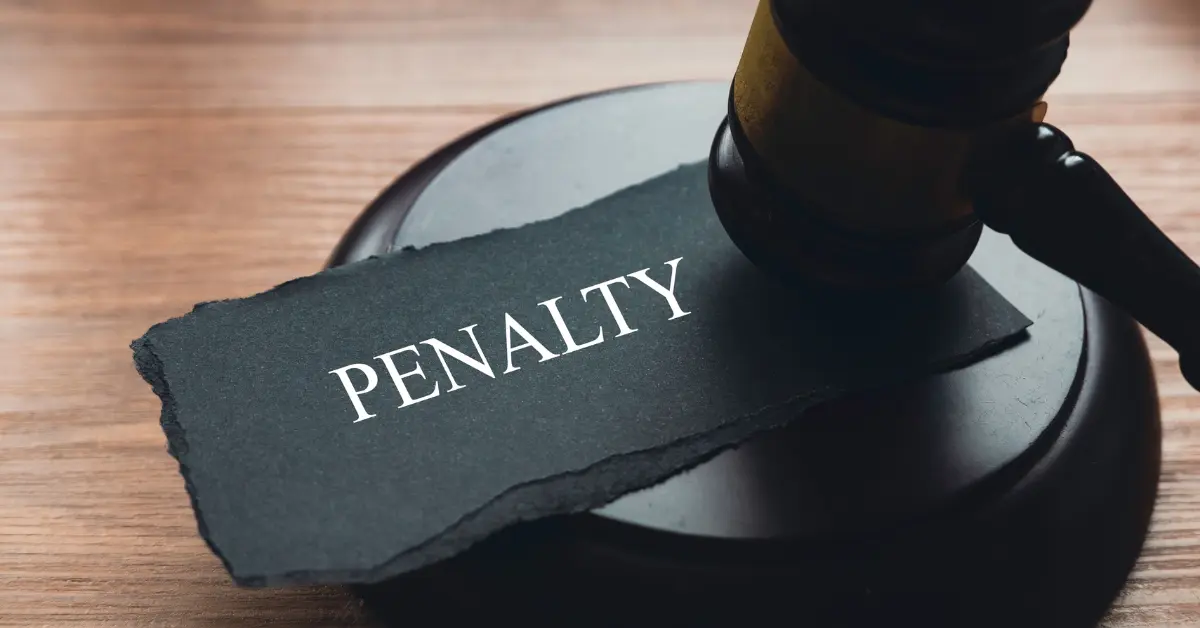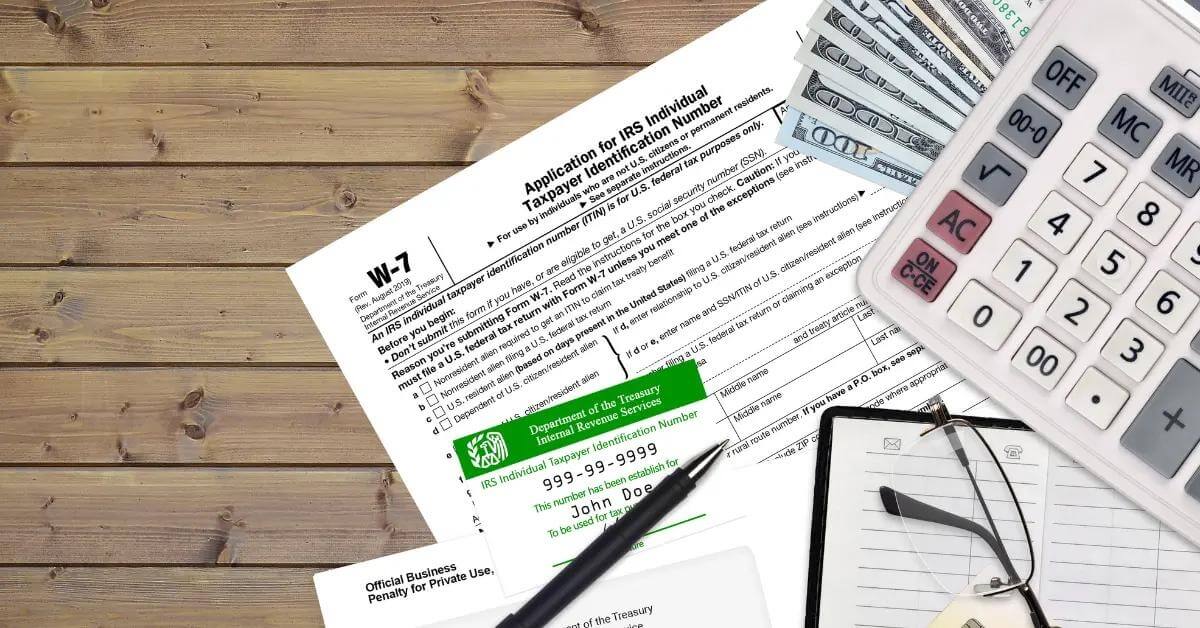Receiving a certified letter from the IRS can be a frightening experience for many taxpayers. A routine trip to the mailbox shouldn’t make you do a double-take, nor should it fill you with apprehension. Yet, that’s exactly what might happen if you find a certified letter from the IRS.
Although these letters rarely bring welcome news, they shouldn’t be a cause for panic. Just be sure to read them carefully, because ignoring them can lead to severe, and often avoidable, consequences.

Why are they sending you mail they can track?
A certified letter from the IRS means they have started the time clock on a deadline.
If you see those three letters in the return address spot, there’s no need to panic. There are numerous reasons for receiving IRS certified letter. It can be something as simple as verifying your identity or designating an appeal deadline. As long as you know the next steps to take, you can navigate what follows with ease.
So, let’s dive into what to do if you receive a certified letter from IRS. Also, check out our tax consulting services as they can help you cut through the complexity, so you know exactly where to turn.
Get Help With The Letter You Received
Be careful to not ignore a certified letter, because if you do owe the IRS and you don’t pay in-full or setup a payment plan, the IRS may file a lien against all of your assets, offset your tax refunds, and take more aggressive enforcement actions if the debt remains unresolved.
Why Would You Get a Certified Letter From the IRS?

Any time an IRS certified mail envelope arrives to your home address, it might raise your eyebrows and have you wondering how to respond. Any notice or letter from the IRS in general can be scary. However, there could be many different reasons behind this correspondence, and not all of them are equally concerning.
Here are a few of the reasons why you might receive a certified letter from the IRS:
- There’s a balance due on your IRS tax account
- Your IRS tax refund needs to change (smaller or larger)
- The IRS needs to verify your identity
- The IRS has a question about your tax return
- The IRS needs additional information from you
- The IRS changed or modified your tax return
- The IRS is experiencing delays in processing your return
In each certified letter, the IRS will clearly explain the issue at hand. Most of the time, they’ll also list out how you should proceed, and what action steps you need to take.
Because delivery of mail by the U.S. Postal Service is not always reliable, there are circumstances when the IRS uses certified mail. This provides them with a traceable way of making sure taxpayers receive their notices. The IRS uses this method of mailing when there are deadlines you must comply with.
The IRS only needs to mail their notice to your last known address. It is your responsibility to file returns or an address change with the IRS to make sure you receive important mailings. Certified mail from the IRS will meet these specifications:
Mailing Receipt
The mail will provide the sender (IRS) with a receipt that proves the date they mailed your notice. It will also provide them with a way of tracking delivery to your location.
They will have the ability to check the status of the mailing online. This provides updates such as the post office leaving you a notice you have mail to pick up.
Signature Requirement
IRS certified letters require the recipient to sign for the mail. This provides the IRS with proof you receive their notice and confirms the identity of the person accepting the mail.
If the addressee does not pick up their mail after three notices, the post office returns it to the IRS. Failing to pick up your mail does not relieve you of your legal obligations to pay your taxes.
Electronic Delivery Confirmation
Certified mail allows the IRS to track the mail they send electronically online. This allows them to check where the mail is, its estimated delivery date, and confirmation that delivery is complete.
Outstanding Balance
If you have an unpaid balance due on your taxes, the IRS will initially send out the notice by standard mail. If you ignore the notices they will move to certified mail. The letter will provide information on how to resolve the taxes you owe. It will include options such as an installment payment plan or an offer in compromise.
Ignoring letters from the IRS will only magnify your problem. The longer you go without responding, the more interest and penalties accrue. If you continue to ignore the problem, you will eventually receive notices of wage garnishments, bank levies, tax liens, and other forced collection procedures.
Refund Discrepancy
You may receive a notice from the IRS if they determine the tax refund you are expecting should be larger or smaller than your return indicates. Even if they are notifying you of a larger return, read the notice carefully for any actions you need to take. You may need to complete specific steps to receive the refund in the new amount.
Identification Verification
If the IRS has suspicions about the identity of a filer, they will send certified mail for identification verification. The letter will contain instructions on what is necessary to verify your identity.
This requires providing valid forms of ID, including student loans or credit cards. Other forms of ID the IRS uses are mobile telephone numbers, filing statuses, and 5071C, 5747C, or 5447C letters.
If you receive this type of notice respond promptly. There will be a delay in receiving a refund until they receive verification of your identity.
Return Questions
If the IRS has a question about your tax return they may send you a request for additional information by standard mail. If you do not respond or the information is critical, they will send a notification by certified mail. The correspondence is likely to include any forms they need you to complete.
Questions about tax returns often deal with the source of your income. They may also be regarding a discrepancy in your mailing address or verifying tax credits or deductions. The quicker you respond to these questions the faster they will be able to process your refund.
Notice of Audit
A notice that you are going to be audited will be sent via certified mail. The letter will contain directions on providing support documents and updating any other information. It will also have a deadline on when you must complete those steps.
Amendment to Return
This is not an audit, but the IRS uses Form 4549 when they determine a change to your tax return is necessary. This letter will provide you with the changes the IRS is proposing. It will include instructions on steps to take depending on your agreement or disagreement with their findings.
If you do not agree with their determination, you may need to provide documentation supporting your position. The changes do not require you to file an amended return. You only need to follow the instructions in the notice.
The longer it takes you to respond the greater the delay in receiving your refund.
Additional Information
The IRS may need additional information before they can process your return. This is often items such as a missing W-2 form or employer information not matching what the IRS has on file. Depending on how crucial the information is, your notice may request you contact them through an online portal or over the phone.
Processing Delay
If you are expecting a tax refund but owe other federal taxes, you may receive a CP44 notice. This is a courtesy notice of a refund delay.
The IRS will send you additional information once they make a determination on whether they will apply your refund to past-due tax balances or are sending you the refund.
Notice of Deficiency
If after completion of an IRS audit they determine you have a tax deficiency, they will notify you by certified mail. This is because once the IRS mails you that notice they must wait 90 days to assess the additional tax on you. If you live outside the United States the waiting period is 150 days.
Certified mail meets the legal requirements for proof of mailing. If you do not agree with the IRS findings on additional tax, you must file a petition with the Tax Court. Your objections must be filed prior to the expiration of the 90 or 150 day waiting period.
Submit your objection by certified mail so you have proof of mailing and delivery. You should also use a qualified tax attorney to make sure the petition is properly written and all tax court rules are followed. You do not want to have your petition dismissed because you did not follow proper procedures.
Notice of Federal Tax Lien
When the IRS files a tax lien against you, they have a legal requirement to notify you. They must provide notification within five days of filing the lien by either certified mail or in person.
If you believe the IRS is wrong in taking this action, you must file your objections within the time frame on your notice. Your request for a collection due process hearing should be prepared by qualified tax attorneys and mailed using certified mail.
What Can the IRS Seize With a Tax Lien?
A lien ensures that your tax debt takes priority over all other debts. The IRS may attach a lien to all of your assets including:
- Bank accounts and other securities
- Real property
- Automobiles
- Business property
- Business accounts receivable
Because of the lien, you will have difficulty selling any of your items or obtaining credit. Filing bankruptcy will not relieve you of your tax debt. Federal tax debt remains, even after the completion of a bankruptcy proceeding.
If the tax lien does not result in the taxpayer resolving the tax debt, the IRS may then file for a tax levy.
Notice of Intent to Levy
When you owe tax to the IRS following an audit, a penalty assessment, or a tax return with a balance due was filed, the IRS may send you a levy notice. There are two types of levy notices the IRS sends via certified mail.
- CP504—allows refunds to be seized
- LT11—final notice of intent to levy
This certified mail from the IRS is necessary to provide proof you received the statutorily 30-day notice. This proof must be satisfied before the IRS can serve a levy on your bank, clients, or wages. If you believe the IRS is wrong in serving this levy you must file your request for a collection due process hearing within 30 days of the IRS mailing date.
The place the hearing request is to be mailed will be shown on your levy notice. As with all other legal filings, the recommendation is to use a knowledgeable tax attorney. They will make sure everything is properly prepared within designated deadlines.
What Can the IRS Seize With a Levy?
A levy allows the IRS to seize your property to satisfy your tax debt. The property the IRS can seize includes:
- Wages, Social Security, Pension
- Bank accounts or other financial accounts
- Your automobiles
- Real estate
- Personal Property
This is a serious action and you need to contact a qualified tax attorney immediately upon receipt of this notice.
Determination of Collection Action
If you file an objection to any of the levy or lien notices the IRS Office of Appeals uses IRS certified mail to notify you of their decision. Their findings must be sent certified mail to prove the date of mailing. If you object to their findings you have 30 days to file an objection with the Tax Court.
If you do not file objections, the IRS may resume their collection procedures at the end of the 30 day period. When filing your objections use an experienced tax attorney and send it via certified mail to prove the date of mailing and delivery.
Notice of Innocent Spouse Relief Determination
This notice is sent after you file for innocent spouse relief and either don’t protest the preliminary determination or file for an administrative appeal. The IRS determination on either of these matters is sent via certified mail.
The IRS needs proof of mailing to meet the statutory requirements of a 90 day waiting period. During that 90 day period, you have the opportunity to file an objection to the findings with the tax court. Once the 90 day waiting period expires, if no objection is filed, the IRS may resume collection procedures.
Make sure your objections are properly prepared by a knowledgeable tax attorney and send them via certified mail to provide proof of mailing and delivery.
As long as you follow instructions carefully, you might not need to communicate directly with the IRS at all. This means there will be no requirement to:
- Call the IRS
- Visit a local IRS office
- File Form 911 Request For Taxpayer Advocate Services
Even if this is the case, it still helps to know what you should do if you receive such a letter. Let’s take a look at the steps to follow.
Step 1: Determine the Intent of the Certified Letter
Even if you do need to contact the IRS in some capacity, the letter you receive will thoroughly explain what to do next. Make sure that you read each line very carefully, as the information is both useful and valuable. Even if the issue seems minor or doesn’t require a response, make sure you don’t throw it away or ignore it.
You may need to refer to the letter when you file your tax return for the next year. This includes letters that indicate:
- The IRS has taken a specific action or made an adjustment to your account
- You’ve received an Economic Impact Payment
- You’ve received (or will receive) an advance payment of that year’s child tax credit
The IRS recommends holding on to these letters for at least three years after the date you filed your tax return. Whatever you do, resist the urge to panic. Understand that the IRS (and its valid private collection agencies) are authorized to send letters through the mail.
Usually, all you need to do is read the information, and follow the directions. If those instructions are a little unclear, then there are two additional resources you can use. These include:
- The Notice and Letters Search Tool on the IRS website
- The Understanding Your IRS Notice or Letter page on the IRS website
- The Taxpayer Roadmap Tool on the TAS website
- The “GET HELP” section on the TAS website
The two IRS resources listed above are on the same webpage. To use the search tool, you’ll need the unique number associated with your correspondence.
Locating Your Case Number
If you received a certified letter from the IRS, then the number will begin with the acronym LTR. If you received an official notice, then it will begin with CP.
Either way, you can find that number on the right-hand side of the sheet. It can be located at the top or bottom corner. Enter that number into the search tool, which will redirect you to the designated IRS page that shares more information about that specific type of message.
Did you receive a certified letter because the IRS changed your tax return in any way? If so, then you’ll need to compare the information provided within the letter to the data on your original return. This can help clarify any discrepancies around which specific changes were made.
Step 2: Determine If You Need to Respond
In some cases, the IRS will simply send you a letter or notice that provides information. This usually occurs when they need to make a change to your individual tax account or your tax return.
They’ll plainly state the changes required, as well as the explanation behind their decision. If you agree with the changes or modifications, most of the time you will not need to issue a formal reply.
Yet, there are certain types of IRS correspondence that will require a reply. This includes any letter that indicates:
- You have a balance due on your tax account
- You need to provide information to resolve an issue (e.g. verify your identity)
- There are changes that you do not agree with
If you need to respond, then it’s wise to do so as soon as possible. This is especially the case if there’s an outstanding issue that’s preventing the IRS from processing your return, such as identity verification.
More Information on Time-Sensitive Responses
Keep in mind that delaying your response doesn’t just cause an operational headache for the IRS.
It could also cause charges to pile up on your account. To make sure your reply arrives on time, the IRS will clearly indicate what your next action should be, and the specific due date that they expect you to respond by.
Why should you follow those directions? Here are a few key reasons:
- To avoid any IRS-issued interest and penalty charges
- To preserve your right to appeal a decision that you don’t agree with
- To make sure the IRS doesn’t take additional action against you or your tax account
In most cases, your response deadline will offer plenty of time for you to gather the required information and send in your reply. However, if you find that you need additional time, then you can always reach out and request it.
Your letter will include information on how to contact the IRS. Often, you’ll receive a designated point of contact that makes this step simple and straightforward. If there is no specific person or office listed, then you can call the general, toll-free IRS contact number: 800-829-1040.
Customer service representatives are available to take your call from 7:00 a.m. to 7:00 p.m. Monday through Friday, local time. Note that the IRS experiences high call volumes, so wait times can be lengthy. In addition, COVID-related delays are still occurring, which can affect their ability to provide the following types of services:
- Providing live telephone support
- Reviewing all types of tax returns
- Processing paper-based tax returns
- Answering taxpayer mail
Step 3: Send Your Response
If your IRS certified letter requires a response, then it will include directions that clearly explain how to do so.
Sometimes, you will need to mail a physical copy of your response. Other times, you can fax it. In the future, you may be able to send in a reply via email, though that capability isn’t available just yet.
When you submit your response, you can visit the IRS Operations page for more information on how long you might need to wait until it’s processed.
Note that if your certified letter requests payment (and you agree with the amount), then you’ll need to go ahead and pay something, even if it isn’t the full amount that you owe. Examples of different payment options include:
- Paying the full amount online by bank account
- Paying the full amount online by debit card/credit card/digital wallet
- Applying online for a payment plan (including installation agreements)
- Applying to qualify for an Offer in Compromise
If you qualify for an Offer in Compromise, then you might be able to settle your IRS tax debt for less than you owe. Otherwise, you can also request a temporary collection delay. If the IRS approves your request, then you’ll be able to delay your payment until your finances improve.
Understanding Your Resources and Contact Options
Even if your letter is clear and easy to understand, tax issues can be overwhelming. It’s natural to want an expert by your side as you plan what to do next.
If you want to speak to someone at the IRS, then check your certified letter. As mentioned, you’ll find one of two types of contact information there:
- The general IRS contact number
- The phone number of the specific employee assigned to your case
When you call either number, you’ll reach someone who can walk you through your letter and explain every detail. Keep a copy of your letter nearby when you call, as well as a copy of your latest tax return. If both numbers are available, then it’s best to start with the employee or department manager who’s working your case.
If you still have unresolved questions or concerns after speaking directly with the IRS, then go ahead and reach out to a qualified tax professional! Our team of experienced tax attorneys is well versed in all types of certified IRS letters and can walk you through yours, line by line.
Other available resources include:
- Certified public accountants (CPA)
- Enrolled agents partnered with a local Low Income Taxpayer Clinic (LITC)
- IRS tax preparation volunteers
A representative from your community LITC can also help translate the letter if English is not your first language. They can also assist low-income individuals who cannot afford to hire additional help. To find an office near you, reference this list.
Don’t React—Act!
There are two reactions many people have when they receive a certified letter from the IRS. They either panic or they set it aside, planning to deal with it later. Neither reaction solves the problem.
Take steps to act, not react, to your notice. When you receive IRS correspondence immediately take the following actions:
- Read the entire notice—make note of reason for the notice, instructions, and methods of contact
- Note important deadlines
- Establish contact with IRS to prevent collection activities
- Hire a qualified tax attorney
The most important step is to not ignore the notice. If you do not take action you will likely encounter federal and state liens, wage garnishments, and more.
Certified Letter from IRS in Detroit MI: A Local Office Guide
If you live in or around Detroit, MI, then there are local Taxpayer Assistance Centers (TACs) available to help you understand your certified letter from the IRS. Here, you can get help with your taxes in-person.
Once you choose the office that has the services you need, you can call them to schedule an appointment. Note that the types of services available will vary by office, so it’s important to make sure they can assist you before making a visit.
To receive any type of services, you will need to bring the following items to your appointment:
- A current, government-issued form of photo identification
- Your Taxpayer Identification Number (usually your Social Security number)
Here are the street addresses for the Michigan TACs that are local for Detroit residents, along with links to each one:
- Detroit: 500 Woodward Ave., Detroit, MI 48226
- Flint: 917 N. Saginaw St., Flint, MI 48503
- Grand Rapids: 3251 N. Evergreen Dr. N.E., Grand Rapids, MI 49525
- Marquette: 1055 W. Baraga Ave., Marquette, MI 49855
- Saginaw: 4901 Towne Centre, Saginaw, MI 48604
- Traverse City: 2040 N. US 31 South, Traverse City, MI 49685
You can find more information about each office, including the types of services they provide and their contact phone numbers online. To do so, visit the Contact My Local Office in Michigan page on the IRS website. Note that the posted hours of operation are subject to change due to staff availability.
If You Receive IRS Certified Mail, Contact Experienced Tax Support Professionals You Can Trust
If you’ve received a certified letter from the IRS, then it’s natural to be concerned about what it entails. As you read through it, you may have a few questions. Or, you might want a tax professional to help you navigate your next steps.
Our attorneys provide nationwide representation in all areas of tax law. This includes assisting with audits, stopping the IRS from garnishing wages, preventing levees, and keeping tax payments at a reasonable level. We offer competitive flat-free pricing.
Our team of experienced and qualified tax attorneys is here to help. We offer extensive tax consulting services, including full-service tax compliance guidance. Feel free to contact us today for a free consultation to discuss your tax-related questions.









